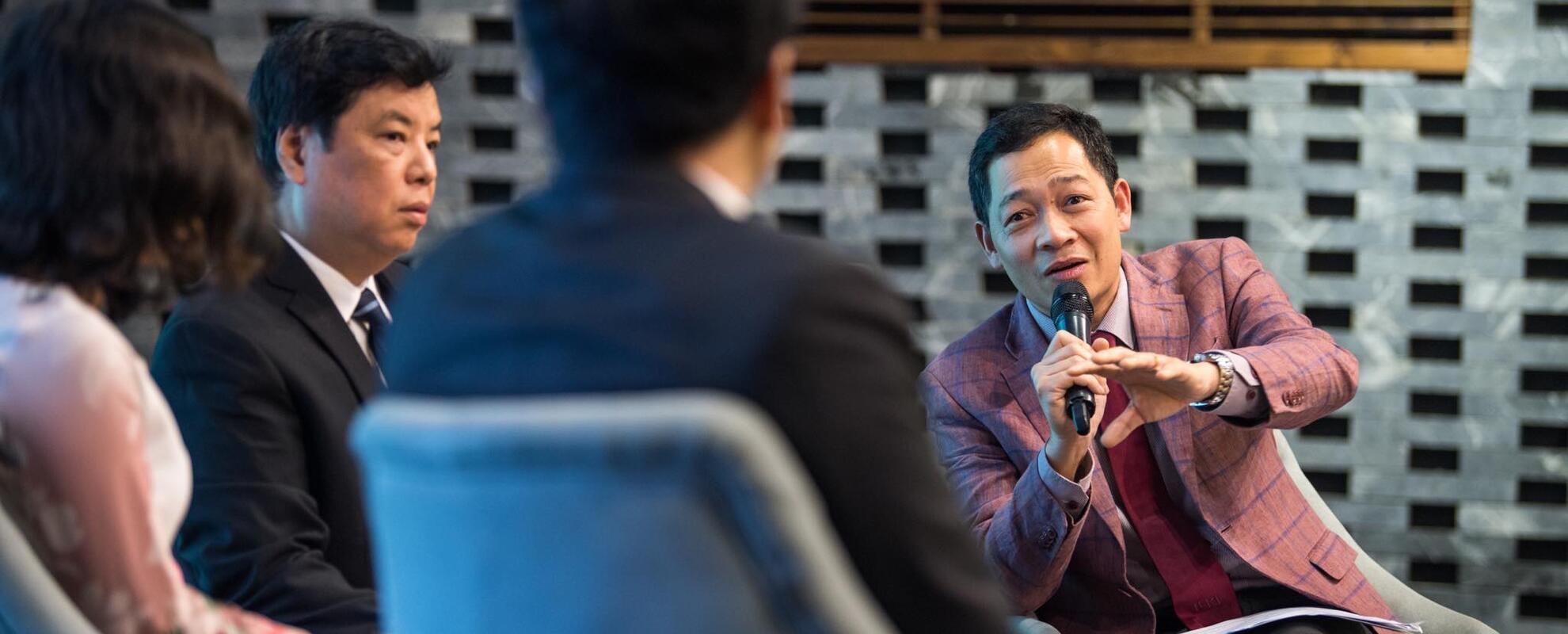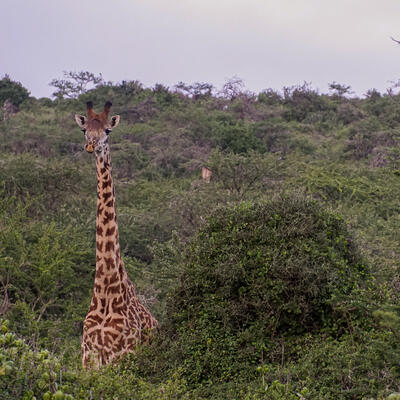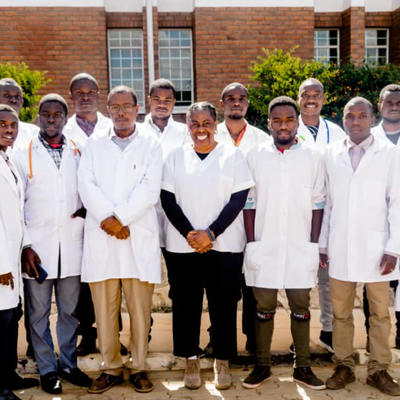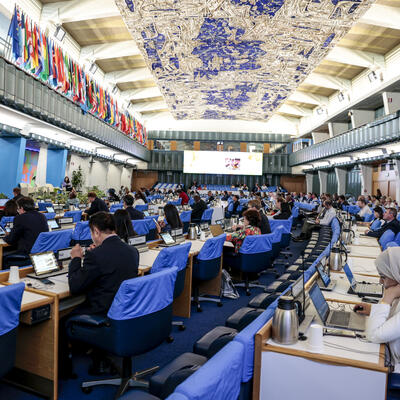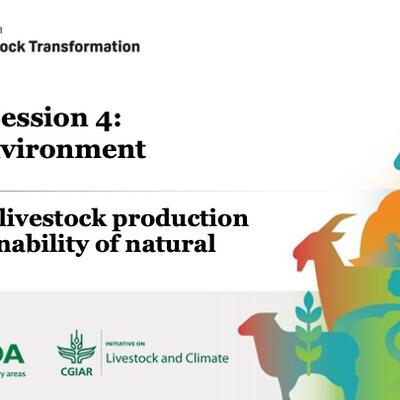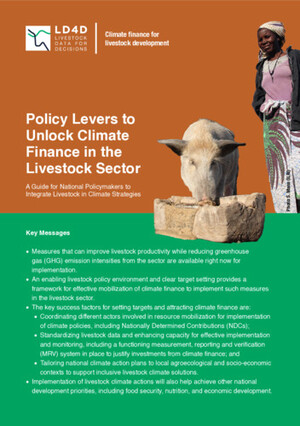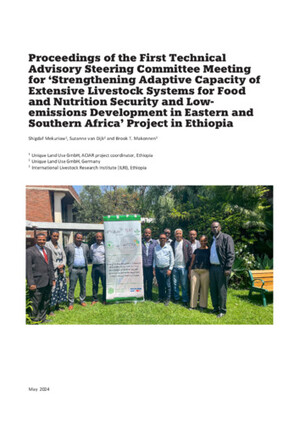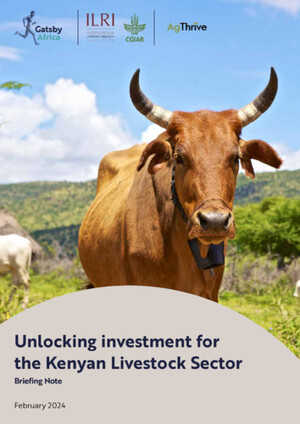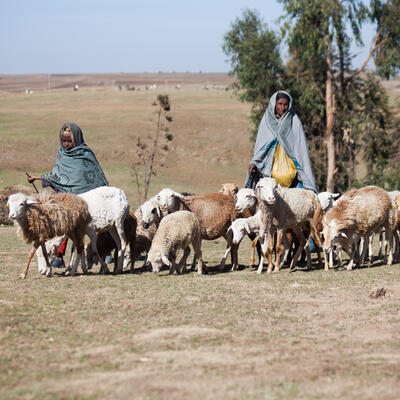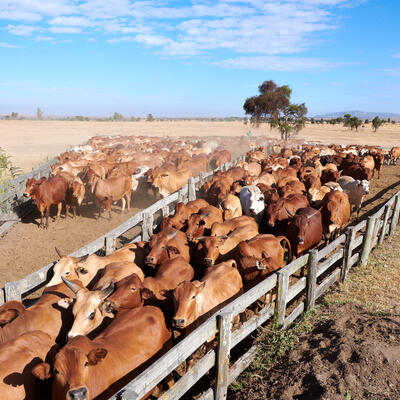
Scientists as influencers: Bringing evidence and balance to the global livestock debate
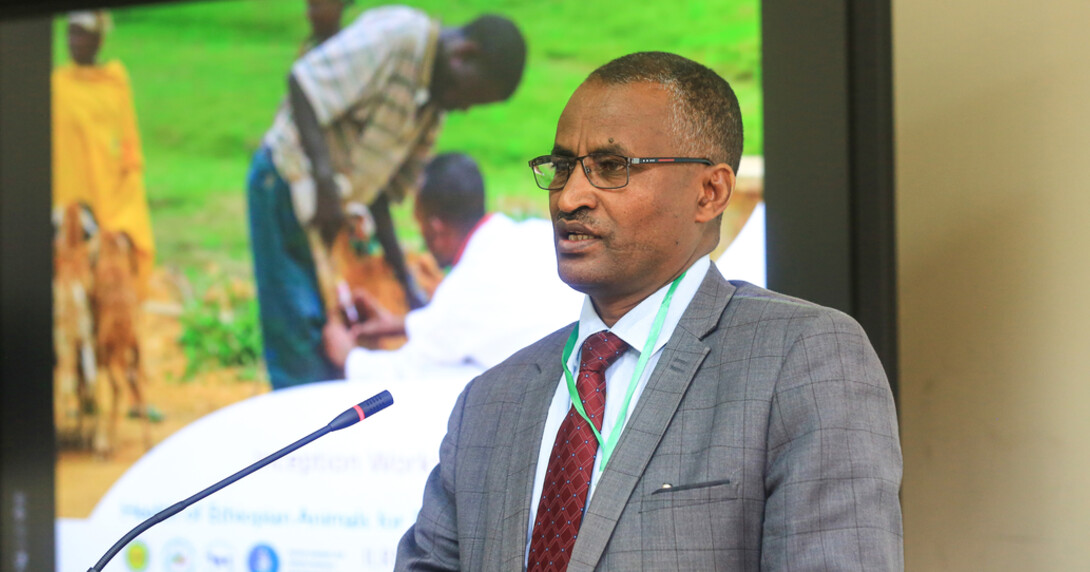
Photo A. Habtamu/ILRI
Ethiopia’s former State Minister of Livestock and Fisheries and ex-ILRI board member, Gebregziabher Gebreyohannes, promotes the developing country livestock perspective, drawing on years of evidence produced by ILRI scientists and partners.
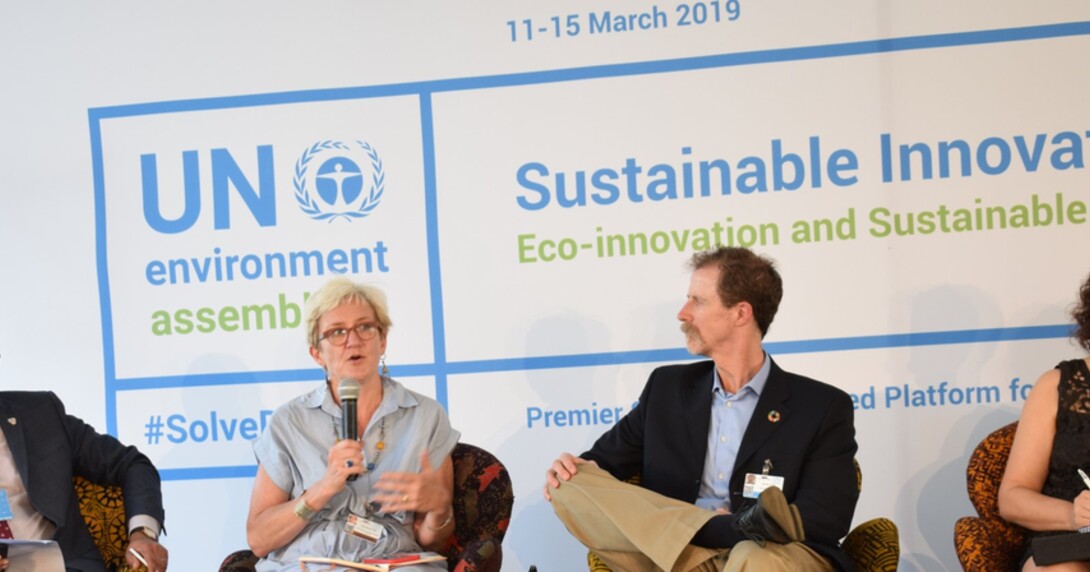
Photo S. Kasyoka/ILRI
Polly Ericksen, ILRI’s environment program leader, in a panel discussion on sustainable consumption and production at the 4th UN Environment Assembly (UNEA) in Nairobi, Kenya in 2019.
How do you turn technical scientific data into a short, sharp key message? Here’s the process that was used to create each one of the 20 Smallholders and Livelihoods key messages.
“As you can see, a lot of effort was needed to just set out the messages and some specific supporting evidence,” Ballantyne said.
Step 1: Create an initial ‘message map’ILRI scientists worked with a communications company to produce a set of short ‘headline’ statements, each with a set of bulleted explanatory notes underpinning the headline. While smallholders were referenced in many places, at this early stage, there was no explicit headline just focused on them.
Step 2: Collate and distill evidence
Scientists reviewed the evidence and identified a set of evidence-based statements, each matched with an evidence summary and a simple qualitative ‘confidence’ assessment by the scientists of their confidence that the evidence supported the statement.
Step 3: Convene with partners
Emerging statements were presented for feedback and input at workshop with partners. One partner volunteered to ‘fact check’ the underlying data behind some of the headline statements.
Step 4: Turn statements into messages
The science teams produced final sets of evidence: comprising statements, the evidence behind each, key references and a qualitative confidence indicator. Each was accompanied by a summary. The communications company helped to refine these into a tighter set of messages for the website.
Step 5: Add investment options
At a meeting, a policy-influencing partner provided feedback that the messages and evidence would be more useful if there was also some guidance and options on what investors could do with the messages. So the science teams worked to develop a set of investment ‘options’ around each set of messages.
Step 6: Refine the message
ILRI scientists and communicators reviewed the almost-final message sets from the communications company to refine these into tighter messages.
Step 7: Launch the message
The final message was published on a custom-built website and launched at a partner meeting.
Step 8: Use the message to inform communications products
The final smallholder message was used in crafting communications products, including Gebreyohannes’ opinion piece as well as others in international news media.
Step 9: Revisit the message
In mid-2020, the original messages are being revisited to validate them with new evidence and align them to emerging priorities and themes of CGIAR, GASL, the upcoming UN Food Systems Summit and discussions on the roles of livestock in the African Union’s CAADP process.
Read more of these key messages at whylivestockmatter.org
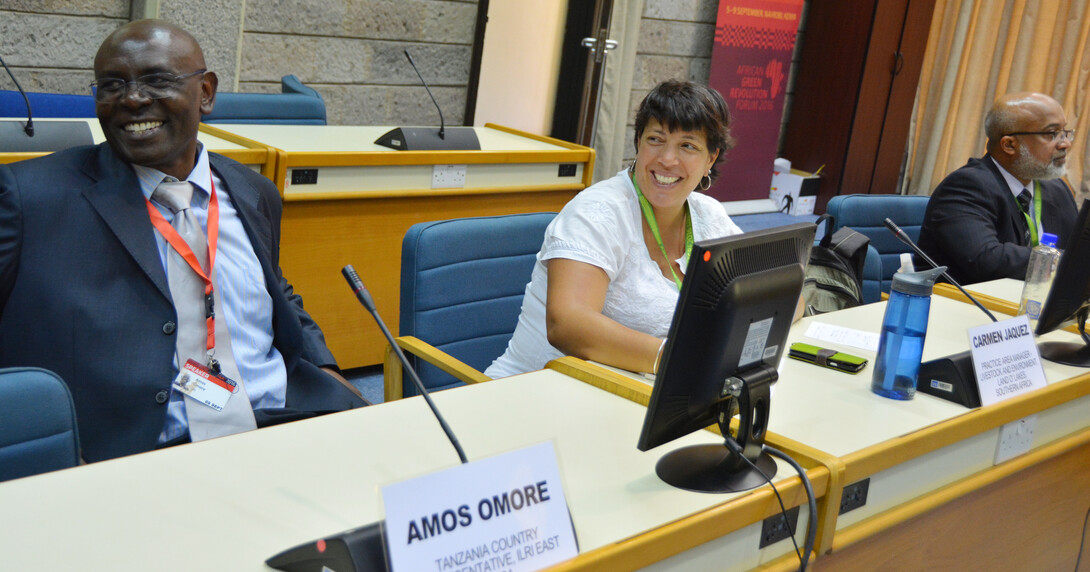
Photo P. Karaimu/ILRI
Amos Omore serving as an expert panelist at the African Green Revolution Forum (AGRF) in Nairobi, Kenya in 2016. AGRF brings together experts and policy makers in the agricultural field from across Africa.





